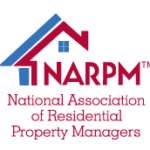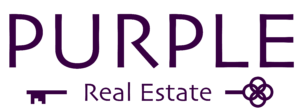
Someone new to investing in the Philadelphia rental market might not understand exactly what rental investing entails especially when you throw in some of the complicated jargons used by local investors. It’s not easy to break into this industry, especially if you keep getting confronted with complicated acronyms and terminologies. This is why you need to acquaint yourself with some Philadelphia rental investment terminologies and understand those terms used for owning, buying, renting and other investment terminologies. Here is a list to help you understand basic Philadelphia real estate terminologies.
Real Estate Terminologies:
Deciding to Buy
Appraisal: This is the property value as determined by a lender in an independent survey using the condition of the property and similar listings to come up with a valid purchase price.
Comparables and comparative market analysis: This process involves identifying the sales of similar homes (comparables) in the same Philadelphia neighborhood to get a more accurate estimate for the property value.
Building classifications:
This is used to estimate the value, risk factor and probable profitability of a property from its market value. In Philadelphia, a rental investor might classify both a property and a neighborhood. You might have a Class C property, in a Class A neighborhood. Either way, these classifications are extremely subjective. Your classifications, would vary from my own.
Class A Properties:
- These are the properties that are most in-demand because of their top-notch features and prime location/condition. New construction, in say the Philadelphia Pennsport neighborhood, would be a good example.
- They are mostly new properties (less than 10 years) and could be luxury housing.
- They have the lowest cap rates around, their assessed values are the highest, with very low risks, low ROI, low yield and high rents.
Class B Properties:
- Second tier to Class A properties—these properties are in demand and can be found in good locations. A recent, nicely done rehabbed property in Port Richmond or Brewerytown would likely fit this classification.
- The buildings are a bit older (approximately 10-25 year), but don’t require any serious maintenance.
- Their cap rates are lower, their assessed values are higher, risk lower, rent is moderately high, so is the moderate yield and ROI.
Class C Properties:
- The locations of these properties are less than desirable
- Badly in need of renovation (their appliances are probably original)
- Higher cap rates, moderate risk, low assessed value, rent is moderately low, ROI yield moderately high (after removing the cost of renovation)
Class D Properties:
- These properties are poorly constructed and located in fringe or mediocre areas
- They are usually more than 30 years old and in need of serious renovation
- Their cap rates are the highest, they have the lowest assessed value, high ROI, high yield, low rents and high risk
In terms of major markets, Class A and B assets have the lowest risks, so lenders will be more inclined to offer financing options, better terms and amortization, lower rates, including lower requirements for debt service coverage. Assets under Class C and D are considered higher risks, which means lenders are more reserved so they offer fewer financing options, the terms are less ideal and the rates are higher. In essence, a higher property class is more desirable and expensive, so the return is lower. Properties with lower class, are less expensive and not as desirable, so the risk is higher and could lead to higher return. Properties in Class B and C will make a better starting point for new property investors to help them find a balance between return and risk.
Acquisition cost: This is the total cost, fees inclusive (inspection fees, closing costs, mortgage, etc) needed for purchasing an investment property
Inspection contingency: This term can be found in the purchase agreement and gives the buyer the right to inspect the property through an independent inspector, receive the inspection report which he/she can use to negotiate terms with the seller or even terminate if need be based on the details of the report and demand for his deposit.
Turnkey (also turn key) property: This is a property that is equipped with all the current market requirements and does not require any renovation or repair before it is rented out to tenants.
Rehabilitation: This includes the repairs required to make an investment property ready for resale or tenant-ready, which could either involve minor works like installing upgraded features or repainting, or large-scale renovations like gutting a kitchen ore having a roof replaced; investors must be notified of any repair before purchase, and these repairs must be listed under the inspection report.
Loan-to-value ratio (LTV): This ratio is used by lenders to compare the loan sum to the property value and estimate the overall risk.
LTV = Mortgage amount ÷ appraised property value (or sale price)
Lenders would rather have lower LTVs, so they offer lower rates of interest to make a higher down payment more attractive. Any buyer that has low LTV is considered low risk. But buyers whose net operating incomes are low are seen as high risk and given higher LTVs.
Dollars per square foot ($/SF): This is used by buyers to compare different properties after factoring in the cost of acquisition, cost of operations and loan costs.
Real Estate Terms: Buying & Carrying Debt
Adjustable-rate mortgage: In this mortgage, the rate fluctuates during the loan duration in line with the benchmark for interest rates which fluctuates according to the market conditions.
Fixed-rate mortgage: Here, the rates remain the same through the life-span of the loan.
Amortization: This involves paying off part of the interest and principal in different amounts every month, thereby building equity for the owner as early as possible.
Escrow: This is a third-party financial account which holds money paid by a buyer temporarily until terms and conditions are agreed by parties; the lender also uses it to pay taxes, make mortgage payments and pay insurance for the buyer, to make it known that the funds are available when needed.
Interest: This is the cost accrued from borrowing for mortgage, wherein the rate is set by the lender. Together with the principal amount, it is paid off across the life-span of the loan; interests can be written off by investors as business expenses when filling their tax returns.
Proof of funds: This statement is issued by a financial institution in a bid to let the buyer know that he/she has adequate funds to make an offer to a seller.
Underwriting: This involves the use of quantitative and qualitative criteria to determine the borrower’s eligibility.
Real estate owned (REO): foreclosed property in possession of the mortgage holder bank; investors sometimes anticipate when a property is not in the best condition, however, REO properties might be more appealing since they are sold below the market value.
Short sale: This is a sales transaction in which the property is sold for less than the amount owed on the mortgage, prompting the lenders to write a letter releasing the lien for a sum lower than the amount owed.
Real estate broker vs. realtor: A real estate broker can be described as an independent professional licensed to help people buy and sell property, while a realtor is a person who acts as an agent for the sale of real estate, and belongs to the National Association of Realtors – in essence, every realtor is a real estate broker, while not every real estate broker is a realtor.
Real Estate Terms: Owning
Assessment: This is the process of determining the value of real estate for the purpose of taxation
Assessed value: This is the value of a property as assigned by any public tax assessor for the purpose of taxation
Appreciation: This involves a rise in the value of a property overtime and is often attributed to increased demand, improvement, weakening supply and/or inflation
Depreciation: The level at which the value of a property decreases over time, which is often caused by wear and tear
Property management: This includes the company or individual paid by a landlord or property owner to take charge of the everyday operation of the rental property, which is often used by both remote investors and local investors.
Remote investing: This is a form of real estate investment where investors are geographically far from the investment property; as compared to traditional real estate investments where the owners will rather remain in close proximity to their property so they can keep an eye on it, conduct necessary maintenance, and develop a relationship with tenants. This way, owners can buy into those markets with favourable returns (like lower ownership cost and/or higher rents) which might not be easily found in their own residential area, allowing the property management company to manage the property since they’re hardly around.
HOA fee: This is the fee paid by a property owner to the organization responsible for organizing community policies if they have investment properties in a condo or homeowners association; the fee is for maintenance of the properties of the association.
Real Estate Terms: Assessing Finances
Carrying costs: ‘This cost must be considered by the investor when considering the list of expenses during the rehabilitation of the property from the moment of purchase till sale takes place.
Equity: This is the difference between the present market value of a property and its outstanding mortgage sum; as the buyer continues to pay the mortgage balance, the property continues to appreciate and so does the owner’s equity over the property.
Return on investment (ROI): This is an investment property’s net profit measurement (in terms of percentage) relative to its total cost of acquisition; the higher the ROI, the higher the yield enjoyed by an investor.
ROI = total profit ÷ total cost
1031 Exchange: This is a tax procedure whereby property owners reinvest the proceeds from their investment property into other similar investments in a bid to defer payment of their capital gains tax.
Capital improvement: This includes any permanent improvement that adds value to the rental property (like new amenities or appliances).
After repair value (ARV): This is the property value after improvements or repairs by the new owner, which has an effect on what an investor receives as rent.
Gross debt service: This is the money needed to service the principal, taxes, interest, and utilities if any.
Debt-to-income-ratio (DR, D:I): This is the ratio used to compare the total monthly payment of debts to the gross monthly income; this is used by lenders to measure the ability of a buyer to service their debt monthly.
Net operating income (NOI): This is the income generated from the rental property annually, which could include rent and other sources of income like parking, storage and laundry after subtracting property expenses like HOA/COA fees, maintenance/repair/renovation cost, landscaping, insurance, property management and utilities. Amortization, capital expenditures, mortgage payments and depreciation are not included as part of NOI, and the calculation is before taxes.
NOI = Gross income from a rental property (minus any vacancy) - property expenses
NOI is simply an investor’s prospective income from an investment property if there is no need to service a mortgage on the property.
Cash flow: This is the accrued net income from a rental property after subtracting loan payments and property expenses; depending on your monthly expenditure, your cashflow could be negative or positive.
Cash flow = NOI - debt service payments
Cash flow is the total money accrued to a landlord at month end after paying operational and ownership costs.
Cash on cash return (CoC): This is a pre-tax calculation used to measure the return percentage on the cash investment on a given property, which according to experts offers a more precise analysis of the performance of the investor.
Cash on cash return = annual pre-tax cash flow ÷ total cash investment (down payment)
Capitalization rate (cap rate): This percentage is arrived at by dividing the prospective NOI by the sale price of the rental property to discover the expected return on investment without the mortgage.
Cap rate = NOI ÷ sale price (market value) OR assessed value
Most low cap rates have higher price points, which means lower yields. However, that does not stop you from collecting more rent. The lower price point associated with high cap rate is due to the risky nature of the investment (where the location is less desirable, or the condition of the property is not great). However, with a low purchase price, you can actually get a better yield.
Debt coverage ratio (DCR) or debt service coverage ratio (DSCR): This ratio compares the ROI of the investment property to the property’s debt service.
DCR = ROI ÷ debt payment
This calculation is used by lenders to determine whether or not you’re capable of generating the income needed to pay back the loan.
Net yield: This is the amount of earnings on an investment property after the annual deduction of expenses.
Gross rental yield: This calculation is used for estimating an investment property’s annualized return.
Gross rental yield = Gross income from a rental property ÷ acquisition cost
Principal reduction: The mortgage payment that services payment of the borrowed money and not payment of interest.
Capital expenses/expenditure (CapEx): This includes money expended on ownership of property or maintenance like landscaping, replacements of window screen, insurance payments, plumbing, etc. while capital expenditures are larger one-time expenses like improvements/renovations, and purchases made to extend the value of the property paid using capital expense reserves
Capital expense reserves: This is the money set aside yearly to handle large expenses like new appliances, HVAC system repairs, roof replacements, etc. to reduces the effect on your cash flow.
Internal rate of return (IRR): This is used to measure the long-term profitability of an investment property and considers change in equity in the course of the investment and cashflow; it is also known as the point in which the expense net value equals a given gross rental income indicating that the property has really become profitable.
Debt-to-equity ratio: This ratio is used for measuring a buyer’s ownership of the investment property by comparing the amount invested by a buyer and the amount they owe – it is basically used to calculate the extent of the buyer’s ownership of the property.
Real Estate Terms: Renting
Vacancy rate: This is the percentage of units left unoccupied within a rental property at any point in time.
Tenant screening: This involves conducting background checks, credit checks, interviewing, checking up references and vetting applicants in a bid to find the most suitable tenant.
FRBO: This is an acronym which means the property is “for rent by owner”.
Liability insurance: This is a form of insurance policy taken by property owners to protect them from negligence claims or actions involving property damage or bodily injury.
Rental property: This is an investment property where tenants make monthly payments to the owner for residing there.
Short-term rental: This rental involves leasing property for short periods of time, like vacationers; most property owners market this service through online platforms like VBRO and Airbnb.
Long-term rental: This is the traditional system of rental where the lease is for longer durations like a year or more.
Rental income: This is the income accrued from rent paid by tenants to their landlord for renting the property.
Rental property calculator: This is used to evaluate whether or not a property will be a good investment before purchasing it. it is an online tool where owners can plug in the costs associated with their investment property and predict the cash flow, IRR and ROI.
Property Management Rental Property Calculator
Single-family home: This is a free-standing residential property that is not in any way attached to any commercial or residential property.
Multi-family home: This is a residential property that can house different tenants within one structure but in separate units.
Mixed-use building: This is a property that has been zoned for residential and commercial purposes, an example is a multi-family home that also doubles as a convenience store.
Leasing fee: This is the fee paid by a property owner to the property manager after the latter signs a tenant to the rental unit; the property owner also pays the property manager a re-leasing fee if the tenant renews the lease.
Vacancy provision: This is money set aside for possible expenses if a rental unit remains vacant for a prolonged period of time (usually about 12% of the rent rum where 6% is for vacancy and the other 6% maintenance).
Fair Housing Act (FHA): This is a federal law which prohibits discrimination from sellers, lenders, landlords and others against people in certain protected class because of their nationality, race, disability, gender, family status, or religion.
Why you need to understand these terms
There is a lot of money to be made in Philadelphia rental property investing. If done right, rent can serve as passive income that even increases as the property continues to appreciate. This is why you need to understand all these real estate investing terms. As soon as you’re confident enough in your knowledge of the market, you will be making money as an investor and rental owner in no time.






